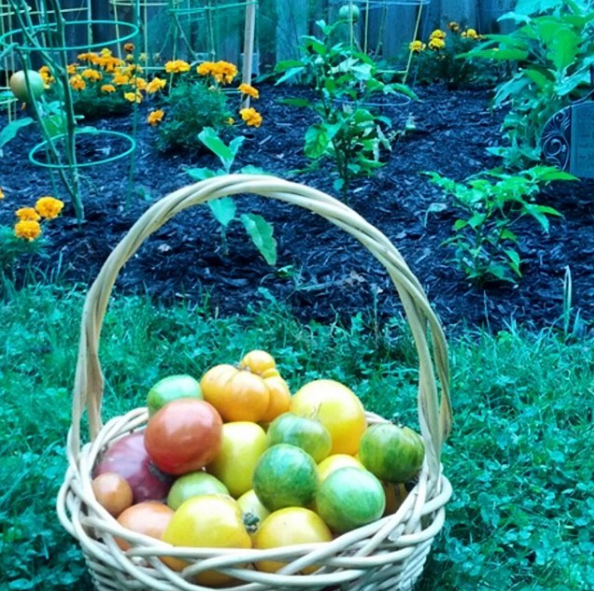
I’ve always wanted more ways to connect to mother nature, but I lived in the city.
The reason I became an urban dweller was to save on commuting costs to and from work. Plus, I didn’t want to spend four hours a day traveling. It just seemed like such a massive waste of time.
I often dream of owning a ranch complete with a farm and animals.
I can’t think of anyone who doesn’t want to get away to the country, especially those of us who reside in a concrete jungle. And, honestly, I just get tired of paying high prices for organic foods. I understand that it takes more time to cultivate, but I want to have more control over what I eat.
My great grandparents lived off of their farms. Why can’t we emulate that to some extent? I realise it wasn’t easy, but isn’t it much more rewarding to enjoy the fruits of your labor?
While I don’t have the means to just start farming tomorrow, I figured I could begin by creating my own sustainable home garden.
After much research, I found that anyone can do it, even with a small patio. So, that is what I did and I have never looked back.
https://www.instagram.com/p/BKg9U6tAfb5/?taken-by=ecofolks&hl=en
Why you should grow a sustainable home garden:
I’m sure I don’t have to convince you too much, but these are the reasons that helped put more pep in my step.
I would be tired after work, but reminded myself that we are all caretakers of this planet. That includes taking care of our health.
When I grow my own vegetables, I know exactly what I did to produce them. From fertilisation to water and care, I was a part of every step of the process. I don’t have to use harmful pesticides or fungicides. Since I am in control, I can take measures needed to prevent E. coli and salmonella.
Going to the grocery store often leaves me with sticker shock. Prices continue to go up, and our wages remain stagnant. I almost felt powerless at the checkout counter. But, what can you do? We need the groceries, right? And, if a certain product has a bad farming year, expect prices to skyrocket.
Well, I don’t have to succumb to that with my own sustainable garden.
We don’t have to be under that type of pressure. I can freeze, dry and can my vegetables for use throughout the year. I don’t need to binge watch Netflix on the weekends, I am engaging in some real, fun work.
But, growing a garden isn’t just about health.
It promotes physical, emotional and mental improvements as well. Have you ever felt imprisoned by your job, or by your paycheque?
I think most of us have felt that way at one time or another.
A sustainable garden is a path to freedom. When growing our own food, we control how much money we are willing to spend, and it is often vastly cheaper in the long run. Of course, a home garden can’t produce the same amount as a commercial farm, but you don’t need to.
Spending time in your garden can help relieve stress and increase your activity levels. Working in the sunlight helps to promote a better immune system, sleep cycles and decrease depression.
Moreover, nothing can provide a better sense of accomplishment than growing your own food. You know that you placed that seed in the soil and cared for it throughout its growth. You are using your capabilities to provide better food for your family. A fresh salad, picked right from your garden—doesn’t get any better!
So, let’s get started on the basics, shall we?
Pick a location:
You want a space that is close to a source of water, receives ample sunlight and is protected from frost and wind. This can be a few containers on your patio or a 50-by-100-foot plot in your backyard. I prefer to use raised beds because they are much more manageable.
To illustrate, I plant 4-foot-wide raised beds. It helps to have fewer rows—because then you will need fewer paths between rows.
Choose your vegetables:
Pick vegetables you like to eat. Think of how much you want to plant.
When starting out, it’s better to have a well-maintained garden than a large one full of weeds. If there could be an issue with animals getting in to your precious crops, build a fence around it. The fence can provide a secondary use as a trellis for beans, tomatoes and peas. I started by drawing a diagram of my garden.
If you have tall vegetable crops, plant them on the north end of the plot. Then, plant the short crops in the front. This helps prevent shading of the shorter plants. If you’re in the Southern Hemisphere, this would be and east-west division.
Prepare your soil:
You will need fertile and well-prepared soil. We all want to eat healthy vegetables, and it starts with the right soil.
It should be free of stones, moisture retentive and supplied with organic matter. Don’t work soil if it sticks in a ball and does not readily crumble. That means it is too wet. It should crumble without being cakey.
Test for pH:
If the soil has a pH lower than 7.0, it is an acidic soil. If it has a pH higher than 7.0, it is alkaline. You can buy pH kits at any nursery—in fact, garden centres will usually test the soil for you.
Plant your crops:
You want to make sure you have pathways so you don’t walk on areas that have been planted—if you use pots, then this won’t be an issue.
If using soil beds then tag each area to remind you of what you planted.
If you are growing plants that have vines, plant them in soil mounds. Place trellises around peas and tomatoes. You can cover your rows out of old rebar and tomato cages.
If you want stepping stones, you can use old pieces of concrete. Old pantyhose can be used as garden ties for items such as cantaloupes growing on trellises, giving them extra support.
Your garden fence can be made with scrap wood, fallen branches and saplings. Even your plant tags can be made with twigs.
As you can see, a sustainable garden requires some research and TLC. Other than that, it is not rocket science. And, now, you will have healthy vegetables that you are proud to eat.
~
Author: Mollie McDonnell
Images: Flickr/Pretty Poo Eater ; Instagram/Ecofolks
Editor: Erin Lawson

 Share on bsky
Share on bsky






Read 0 comments and reply